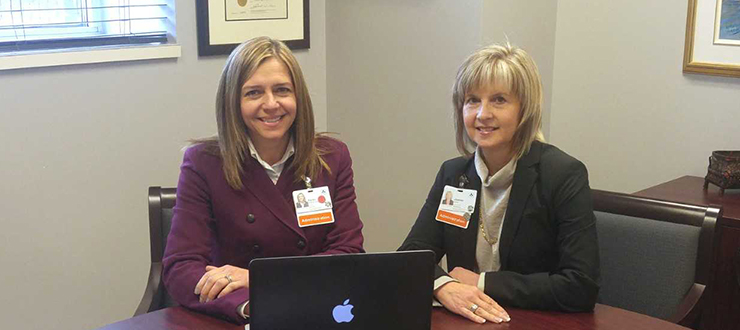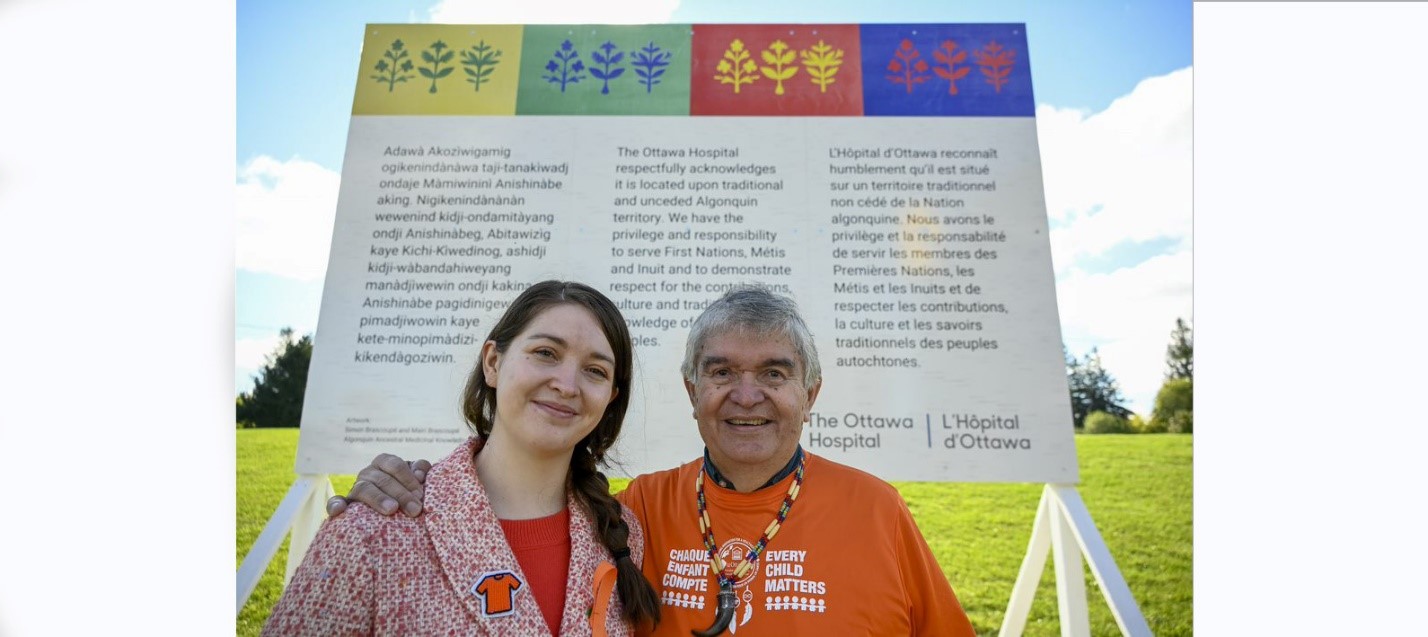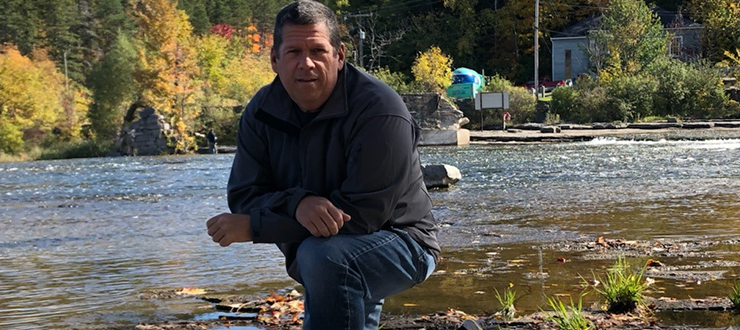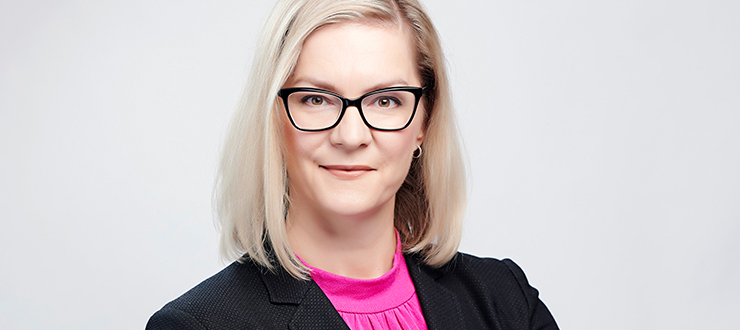
Joanne Read (right) and Karen Stockton work together with hospital staff to make sure that hospital spaces meet the needs of patients, families, and staff today and for generations to come.
You’ve been in a car collision and have been rushed by ambulance to the Emergency Department. You’ve had x-rays taken and analyzed, and you’ve been whisked away to an operating room. You spent three days in the Intensive Care Unit before being transferred to your own patient room, where your friends and family greet you.
Chances are you’ve never thought about all the behind-the-scenes planning that goes into improving a patient’s experience at The Ottawa Hospital. In fact, every part of your journey through the hospital was planned – perhaps months or years in advance. How far one department is from another, what equipment is ready for you where, and even how your room is set up – all is designed to deliver the best care to you.
As part of International Women’s Day, meet two leaders who plan every element of that patient experience, right down to the last detail. Through commitment and cooperation, they inspire others to use their own talents to improve health care for all.
Joanne Read is the Vice-President of Planning and Support Services for The Ottawa Hospital. She is responsible for all the logistics that support clinical care, including transportation, supplies, food, facilities and the warehouse. Karen Stockton is the Director of Planning. Together, they are part of a large team that keeps the hospital running.
“Our planning includes everything from the required structure of an actual patient room, to how the room is set up to best suit the patients,” said Read. For example, inside a patient room, Read and Stockton plan everything from the location and set up of the washroom, to a patient’s access to natural light, to the digital setup needed so patients can connect with family members who may not be able to visit the hospital in person.
Whether it’s renovations to the hospital’s existing facilities or planning the new campus, patient rooms are just one part of the puzzle.
“We also have to think about what departments and services work well together,” said Read. “The trauma bay, diagnostic imaging department, and operating rooms all need to be close to the Emergency Department – because of minutes matter.”
Sometimes it’s not about building something new, but rather shifting existing resources around to meet new needs.
“People may work in the same spot for a long time but, over time, their needs change,” said Stockton. “So we look at it as a big puzzle and try to fit the pieces together differently and make the collective happier and better for it. If we do that, we make this place a better place to be.”
With so many different pieces to consider, Read and Stockton consult with many different groups.
“We spend a lot of time having conversations not just with the clinical team we are building a space for, but also with people from all the support services around it,” said Stockton.
They learn industry standards, study best practices, and talk to consultants to help them make these decisions. They also work closely with The Ottawa Hospital’s Patient and Family Advisory Councils, which include patients and families who have received care at the hospital.
Perhaps the biggest test of this planning puzzle is the new campus project. Read and Stockton are developing its master program and master plan. Since it’s a new build, Read, Stockton, and their teams will use their expertise to plan departments, units, equipment, programs, and services in a way that maximizes the benefit to patients, families, and staff.
The master program and master plan are not just about the new campus. They’re about looking at The Ottawa Hospital as a whole and making sure it can meet the needs of patients, families, and staff today and beyond.
“We look strategically over a number of time frames and ask, ‘what are the requirements and what will the demographics be of the people in our service area going forward?’” said Read. “We think about what services and programs we will deliver. Our role is to take that information and put it into a plan, not just for the new campus, but for all our other campuses.”
Moving these plans forward takes a big team. Read and Stockton have embraced their roles as leaders.
“I don’t think when I started my career that I would have thought about taking a leadership role, but I really enjoy working with people, listening and learning,” said Read. “I try to make sure not only that I’m always learning something new, but also that I’m providing the opportunity to the team to interact and learn as well. “
Teamwork in leadership is also important to Stockton.
“Working independently is never something I wanted to do,” she said. “It’s very satisfying to do it as a team. Leadership roles give me the opportunity to help guide my teammates. All of them are very independent, but when we come together it’s amazing what we can accomplish.”

Support patient care and research at
The Ottawa Hospital
You might also like…
A special video message for International Women’s Day
Every year on March 8, we recognize International Women’s Day to celebrate how far we have come with equal rights and opportunities for women, and to acknowledge how far we still have left to go. This video is a short-but-sweet reminder that the women who work for our organization are driven, caring, innovative and powerful.
A look to the future: Six innovations coming to our campuses
As we set out to build one of the most advanced hospitals in the country, we’re often asked what we have planned for our existing campuses. From installing new equipment to opening long-term care homes, we have a number of projects in the works to enhance and expand our world-class services at all our locations.
Paging Dr. Green: Six environmental initiatives at The Ottawa Hospital
From sustainable design at our new campus to choosing ultra low-flow anesthesia in our operating rooms, here are a few things The Ottawa Hospital is doing to care for the health of our patients, staff and environment.
Original artwork by Simon Brascoupé and Mairi Brascoupé presented at the land acknowledgement ceremony for the new Civic development
Learn the public and private story behind the series of four prints recently presented at the site of the new Civic development.
The Ottawa Hospital contributes to ‘a beautiful evolution’ in HIV research and care
AIDS. It’s a loaded word for many people in Canada, especially gay men. This World AIDS Day, we’re looking back on how The Ottawa Hospital has stayed at the forefront of life-saving HIV research and treatment for nearly 40 years.
Dr. Lisa Calder, new CEO of the CMPA, talks leadership, patient safety and the future of health care
Physician, researcher and educator Dr. Lisa Calder discusses the future of health care and how working at The Ottawa Hospital has prepared her for being the CEO of the Canadian Medical Protective Association, a national organization with more than 100,000 physician members.


 To reset, hold the Ctrl key, then press 0.
To reset, hold the Ctrl key, then press 0.






Comment on this post